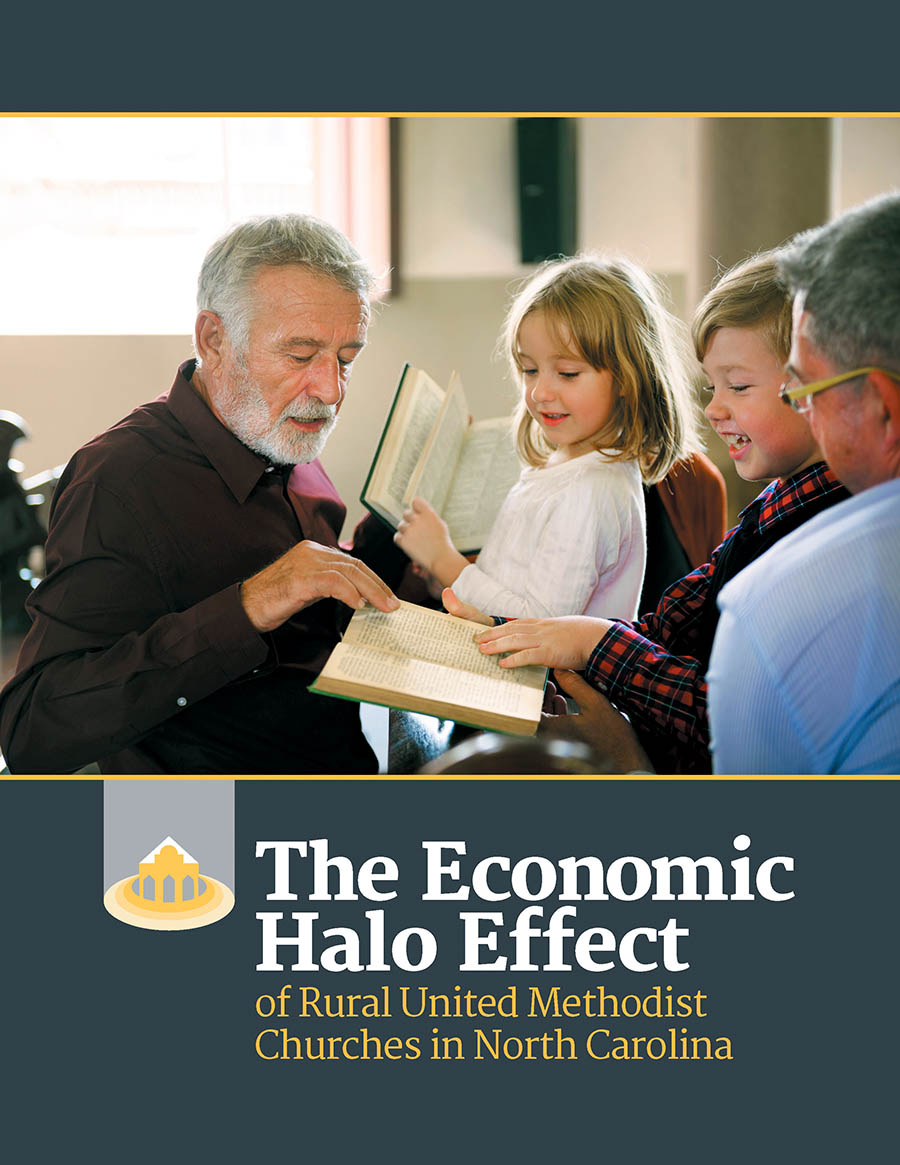The Economic Halo Effect of Rural United Methodist Churches of North Carolina
A Rural Methodist Church in North Carolina Brings, On Average, an Annual Economic Value of $735,000 to its Local Economy
Research confirms:
- Seventy-two percent of those benefiting from programs housed in United Methodist Churches are not members of those congregations. In effect, rural Methodist churches are de facto community centers, as is the case with urban congregations.
- Congregations generate value because they spend locally and hire locally; they host events that bring people to the community who spend money there; they share space in their buildings, at low cost or no cost; and they provide needed resources and services to the community.
Partners for Sacred Places has known for over a decade that the value of sacred places extends to the larger community around them. Two rounds of previous research by Partners on the Economic Halo Effect of churches and synagogues have demonstrated the outsized civic value of sacred places – i.e., the value they bring to the larger community. Until now, however, that research was focused on urban sacred places.
From the Urban to Rural Study
Partners for Sacred Places, in partnership with the Duke Endowment and UNC Charlotte Urban (Institute), conducted a study to better understand the local economic impact of rural churches, specifically examining the impact of United Methodist Church (UMC) congregations in North Carolina’s small towns and rural areas. The study examined who benefits from the presence of these congregations and what contributions these churches make to the lifeblood of their communities as conveners, trusted partners, and service providers.
Partners and UNC Charlotte conducted extensive interviews with leaders of 87 rural churches and then monetized and assigned a numerical value to six areas. These areas include:
- Direct spending
- Education & childcare
- Magnet effect
- Individual impact
- Community serving programs
- Outdoor recreation space
The study found that Methodist churches are not just for Methodists alone. This is an important finding, because civic leaders – mayors, foundations, business leaders, arts organizations, community groups – need to see our churches as places that serve everyone.
Small churches can make a big impact because congregational size and economic impact are not always correlated.
Examples include:
Franklinton United Methodist Church
- Has an active membership of 25 but an annual Halo impact of almost $1.2 million annually
- Hosts an early childhood education program serving over 40 families and supports a myriad of other programs that provide food and serve the youth of the area
Trinity United Methodist Church
- Congregation composed largely of older adults and retired individuals
- Generates 742 hours of volunteer time and $2,400 in donated goods to support a food program for low-income children
- Generates $20,000 each year via the food program
This study was conducted by Partners for Sacred Places with the UNC Charlotte Urban Institute.
Partners for Sacred Places is the only national, nonsectarian, nonprofit organization dedicated to the sound stewardship and active community use of America’s older religious properties.
The UNC Charlotte Urban Institute is a nonpartisan, applied research and community outreach center at UNC Charlotte. It provides services and research and analysis around economic, environmental, and social issues affecting the Charlotte region.

